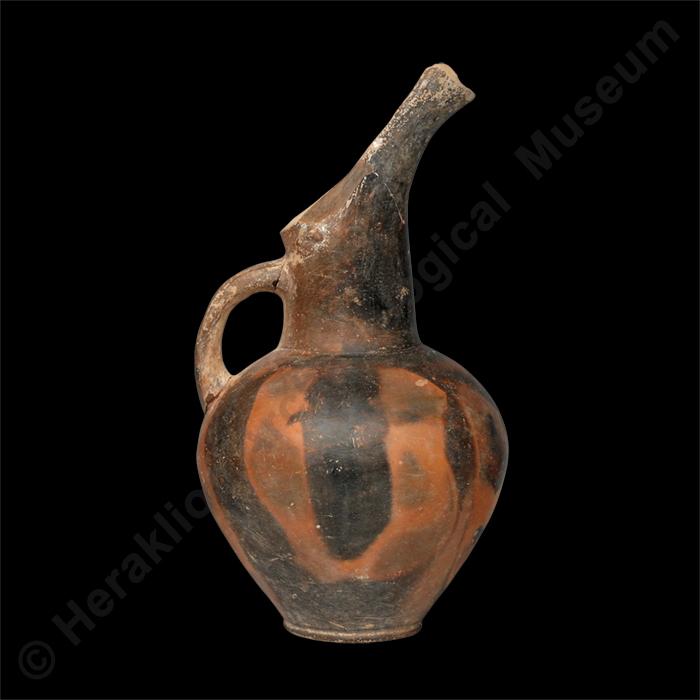Clay beaked jug with mottled decoration
Π5321
Clay
Intact
Height: 33 cm.
Vasiliki
West House
Early Bronze Age. Prepalatial period, Early Minoan IIB period.:
2400 - 2200 BC:
Gallery:
ICase:
5Exhibition thematic unit:
Early Bronze Age - Prepalatial period (3000 - 1900 BC). Settlements and cemeteries - the rise of ruling groupsA network of settlements. Habitation and social complexity
Description
This jug with piriform body and pronounced beaklike spout is a characteristic pottery shape of the Early Minoan IIB period. This example has applied eyes on the upper neck. Equally typical is the mottled decoration found on Vasiliki Ware. This pottery is so named because similar vessels were first found in large quantities in the prehistoric settlement of Vasiliki in Ierapetra. The Vasiliki region is considered the main production centre for tableware, which due to its particularly metallic sheen and its shapes is thought to imitate metal prototypes. The mottled decoration is the result of controlled uneven firing. Vasiliki Ware was widespread, via an organised distribution network, mainly in East and Central Crete.Bibliography:
Betancourt, P.P. Vasilike Ware. An Early Bronze Age Pottery Style in Crete. Studies in Mediterranean Archaeology LVI. G?teborg, 1979, 48. Seager, R.B. Excavations at Vasiliki, 1904. Transactions of the Department of Archaeology Vol. I, Free Museum of Science and Arts, University of Pennsylvania. Philadelphia, 1905, 7-11 (213-217).Author:
E. S.Photographs' metadata
